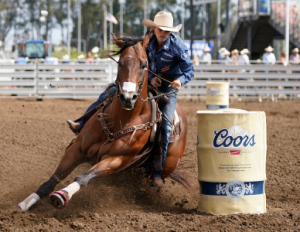 Concern for performance horses and muscle recovery may be the difference between a win and a loss. In various disciplines speed, strength, collection and stamina all play into the difference between earning a big paycheck and awards or going home empty handed.
Concern for performance horses and muscle recovery may be the difference between a win and a loss. In various disciplines speed, strength, collection and stamina all play into the difference between earning a big paycheck and awards or going home empty handed.
Performance horses need to be able to come out of the stall ready to win. (Whether it’s the first day of the event or the last.) Like their human athlete counterparts, a solid nutrition plan is the fuel that allows performance horses to compete and perform at their highest level. With Rebound Technology™, recovery isn’t an afterthought, the horse is always being fed for optimal performance.
Rebound Technology™ is a unique, proprietary blend of research-backed chromium and branched chain amino acids (BCAAs). They support exercise recovery. When performance horses have the right nutrition, they are more able to quickly return to peak performance after strenuous training sessions and/or competitions. Each time an equine athlete competes or performs there is an opportunity to increase its value, that of future offspring or help a rider achieve his or her goals. That’s why avoiding muscle fatigue and giving horses the ability to rebound from exercise and efficiently train for performance activities is a high priority for horse owners and trainers alike.
What Happens When Horses Exercise
When horses exercise, they experience an increased cortisol level. Additionally, reduced muscle glycogen, increased Serum Amyloid A (normal inflammation), increased heart rate, reduced blood sugar and reduced plasma BCAAs. Three major factors in improving athletic performance in the horse are muscle development, muscle recovery and glycogen availability. Faster glycogen replenishment in the horse could lead to increased muscular performance.
As horses work, ATP or energy enables their muscle fibers to quickly contract and relax. Each muscle cell contains only enough ATP for a few contractions. This means horses must continuously resynthesize ATP during exercise primarily via stored glycogen. The more glucose we can make available to the cells in the performance horse, the better able they are to quickly replenish glycogen. The unique ingredient combination found in Rebound Technology™ optimizes opportunity. Opportunity being for these glycogen and glucose levels to rebound after work.
The essential BCAAs leucine, isoleucine and valine help to decrease muscle fatigue and improve muscle recovery19. Research with BCAAs has demonstrated that leucine infusion along with glucose infusion appears to increase whole body glucose availability. Also potentially increasing glycogen synthesis in horses1.
Oral leucine supplementation has shown increased markers associated with protein synthesis in the post-exercised horse. Providing an increased rate of protein synthesis would increase both muscle mass and muscle recovery. Both of which may improve athletic performance. In humans, BCAA supplementation prior to exercise appeared to reduce delayed onset muscle soreness. Also muscle fatigue, increased insulin response along with increased post-exercise rates of glycogen synthesis. Increased availability of amino acids and glucose demonstrated in research shows an improvement not only in protein synthesis, but also a decrease in protein breakdown.
Chromium’s Role in Recovery and Protein Synthesis
Recently FDA and AAFCO approved chromium propionate as a feed ingredient. It’s in Rebound Technology™. It supports glucose getting to the cells. Glucose provides energy to repair. As well as to replenish after work. Chromium is involved in carbohydrate metabolism and other insulin dependent processes such as protein and lipid metabolism. As horses exercise, increased levels of cortisol work against insulin as insulin attempts to move glucose and nutrients into muscle cells.
Chromium supports more efficient insulin function. It does this by stabilizing insulin receptors leading to more efficient movement of glucose from the blood stream. Subsequently, reducing the negative impacts of exercise stress. Additionally, increasing the body’s physiologic ability to move nutrients into muscle cells to function efficiently during exercise and rebuild muscle broken down following exercise13. Research in Thoroughbreds during exercise has demonstrated blood glucose was controlled on lower insulin levels versus control. This demonstrated higher insulin sensitivity when they were supplemented with chromium.
Another potential benefit to the improved insulin sensitivity demonstrated in horses supplemented with chromium propionate? Supporting the signaling pathway for protein synthesis. Protein synthesis is the re-building of structures. When insulin sensitivity is improved, glucose can more readily be available for protein synthesis. Insulin infusion in mature horses was shown to stimulate whole-body protein synthesis and activate the upstream and downstream effectors of mTor signaling in the gluteus medius muscle. Simply put, this means is there was an increase in protein synthesis, or a re-building of muscle.
Glucose – An Important Component for the Working Horse
Glucose is the key energy source for every cell in the horse’s body and BCAAs stimulate protein synthesis. The proprietary BCAAs and chromium in Rebound Technology™ make this key energy source more readily available to horse’s cells. Rebound Technology™ can be extremely important. Especially for the performance horse needing muscle repair and remodeling to rebound in between shows and workouts.
Here at Kissimmee Valley Feed, we are happy to lend our knowledge to maintain the perfect diet for your horses.
Source: Amanda Zenczak at HorseFeedBlog.com
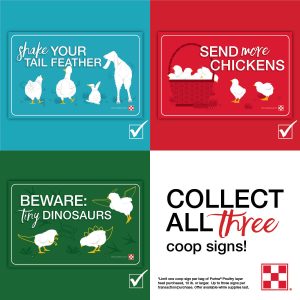 Flock-Tober 2021: Shop at Kissimmee Valley Feed’s Main Store during October and get a FREE limited-edition coop sign when you purchase a large bag of Purina Layer feed*! These signs are popular and we will run out!
Flock-Tober 2021: Shop at Kissimmee Valley Feed’s Main Store during October and get a FREE limited-edition coop sign when you purchase a large bag of Purina Layer feed*! These signs are popular and we will run out!




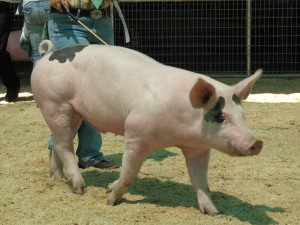 How to Adjust Gain in Show Pigs: Weighing your market hog can be a tense experience, especially when you start counting down the days until the show.
How to Adjust Gain in Show Pigs: Weighing your market hog can be a tense experience, especially when you start counting down the days until the show.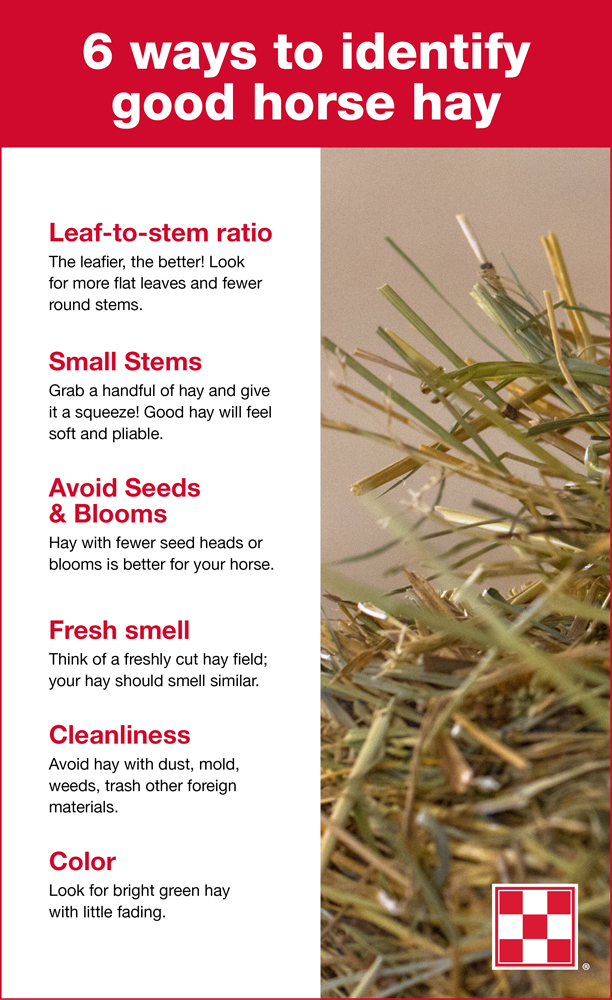 Forage makes up between 50 and 90 percent or more of a horse’s diet. Much of the forage part of the diet comes in the form of hay. Because it’s such a big part of the ration, a good quality hay can help keep a horse healthy, while a poor quality hay can be detrimental. This is why, as nutritionists and horse owners, we put a big emphasis on the quality of hay we feed.
Forage makes up between 50 and 90 percent or more of a horse’s diet. Much of the forage part of the diet comes in the form of hay. Because it’s such a big part of the ration, a good quality hay can help keep a horse healthy, while a poor quality hay can be detrimental. This is why, as nutritionists and horse owners, we put a big emphasis on the quality of hay we feed.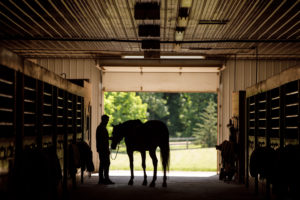 Fat is important for performance horses. The use of fat in the equine diet has a long history. A very old book, Horse Secrets by A.S. Alexander, published in 1913, points out that horse traders knew back then that adding fat to the diet was beneficial for gaining weight and improving hair coat. They may not have known why it worked, but they knew that it worked!
Fat is important for performance horses. The use of fat in the equine diet has a long history. A very old book, Horse Secrets by A.S. Alexander, published in 1913, points out that horse traders knew back then that adding fat to the diet was beneficial for gaining weight and improving hair coat. They may not have known why it worked, but they knew that it worked! Concern for performance horses and muscle recovery may be the difference between a win and a loss. In various disciplines speed, strength, collection and stamina all play into the difference between earning a big paycheck and awards or going home empty handed.
Concern for performance horses and muscle recovery may be the difference between a win and a loss. In various disciplines speed, strength, collection and stamina all play into the difference between earning a big paycheck and awards or going home empty handed.